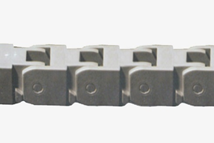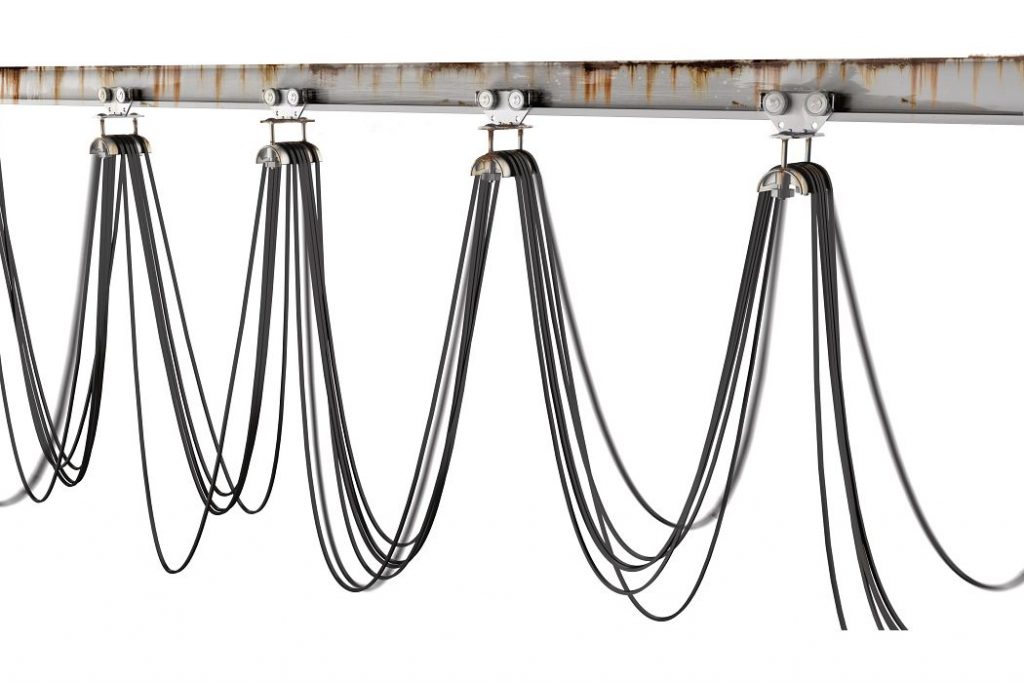Durable cables for energy chains
Why does a plastics company manufacture cables?
Sascha Mais | 23. November 2021
The explanation for how a plastics company like igus came to develop durable cables for energy chains is actually quite simple. When igus launched the first plastic energy chain in 1971, many customers were enthusiastic about the new energy supply concept and wanted to convert their systems.

At that time, there were already systems that were used for energy supply, but each had some disadvantages that customers had to accept.
Advantages of plastic chains?
The advantages of plastic chains are probably best explained by describing the disadvantages of the other systems:
A steel chain is usually much heavier than a plastic e-chain, which uses a comparable amount of installation space. This means higher process energy and therefore higher energy consumption. The largely bolted structure makes assembly effort for steel chains much higher than for plastic plug-in e-chains. Steel chains are also more expensive than comparable plastic chains, and steel chains are not corrosion-resistant.
The disadvantage of cable drums is that they can guide only one cable at a time.
Lengths and winding speeds are severely limited. Some types of cable (bus, motor, or media such as air) require special designs if they are to be used with cable drums. This means very high manufacturing costs and low flexibility due to the lack of cables available from stock. The biggest disadvantage is signal transmission from rotating movement to linear movement via a slip ring, which requires lots of maintenance.
In festooning systems, the cables hang down in an arc of up to 2m, depending on the travel distance. This not only reduces freely available height in such locations as halls, but is also highly susceptible to wind in outdoor areas (on cranes in ports, for instance).
An especially noticeable disadvantage is the required cable length compared to that of the e-chain. While e-chain cables in an e-chain with a travel distance of 100m are only about 55-60m long, festooning cables are 130-150m long. The cable and copper costs are therefore several times higher than the e-chain solution.

The busbar cannot transmit a number of media such as pneumatics or fluids. The transmission of data/bus signals also requires greater effort than in an e-chain. Conductor rails are also maintenance-intensive because the carbon brushes on the collectors must be replaced regularly.
e-chain system
So the advantages of this new plastic chain system were obvious:
- Easy to clean, hardly any abrasion
- Quiet, lubrication-free, and easy to install
- Long travels
- Energy, data, FOCs, oil, and air guided in a single system
- Cable-friendly thanks to smooth contours
- Lightweight, modular, strong, quiet, easy to open
The plastic chain as an all-rounder?
This solved all problems that had occurred so far, and customers could run their applications without any further problems. You might be expecting something like “… and they lived happily ever after.”

But of course it wasn’t quite that simple. After the cables were in operation for a while, another problem arose. Although the energy chains did not fail – and igus had already promised that they would not – the flexible cables available on the market at the time, did. They resulted in damage such as corkscrews, broken jackets and cores, they simply could not handle these movements long enough. These cable failures often caused machine and system downtime. This caused customers to move away from the e-chain, which at the time, was still brand new. So the igus developers were faced with a new challenge: making durable cables for energy chains.
The birth of the chainflex cable
This required a great deal of development, experimentation, and testing. There was a detailed assessment of what was important in these cables and what properties they had to have to ensure a long service life. After the first chainflex cable wound in bundles, the CF1, was introduced in 1988, igus’ cable product portfolio grew each year. Intensive tests and close cooperation with our customers enable us to continuously expand various cable series. Today, igus offers the largest portfolio of cables specifically for e-chain applications with over 1,354 cable types.
We offer up to seven different mechanical control cable designs from stock to provide almost any moving application in an e-chain with the optimal cable.

Did that solve all the problems? It did at the time, but chains and customers continued to evolve. So we, too, continue to evolvie and adapt to new, demanding requirements (such as cleanrooms or very small bend radii).

